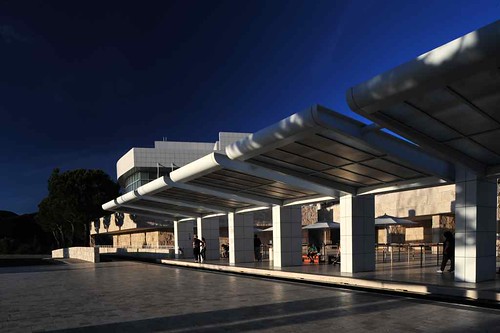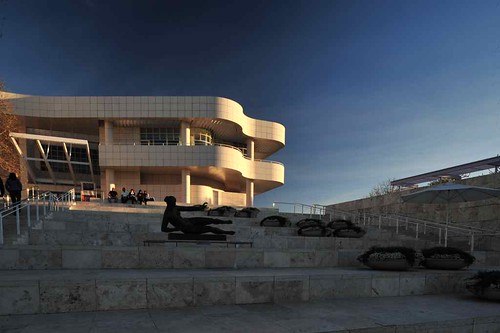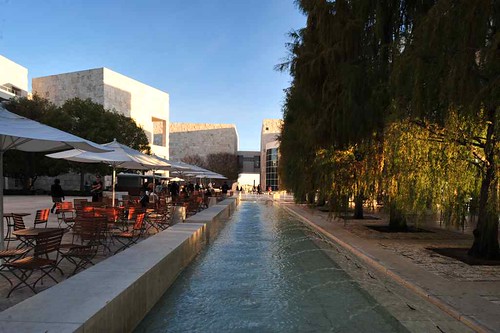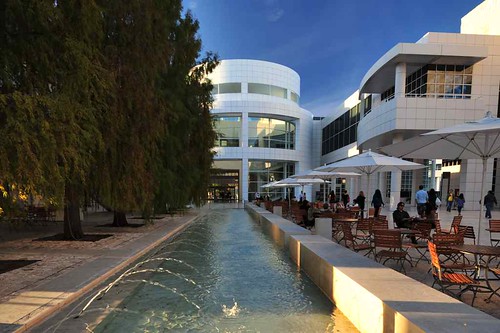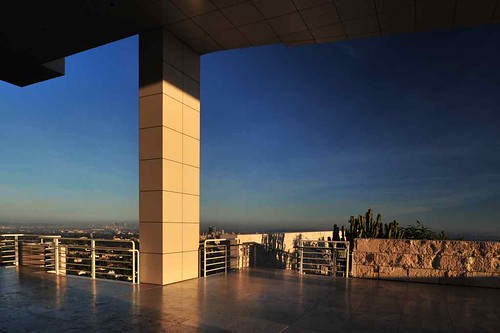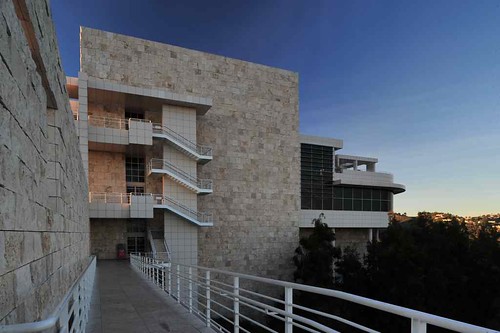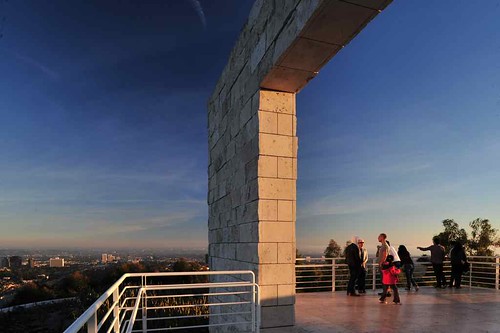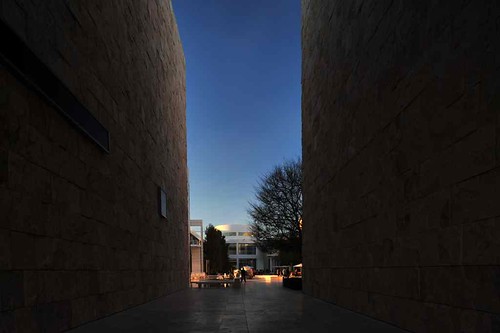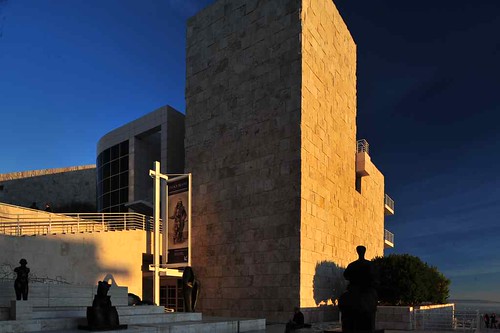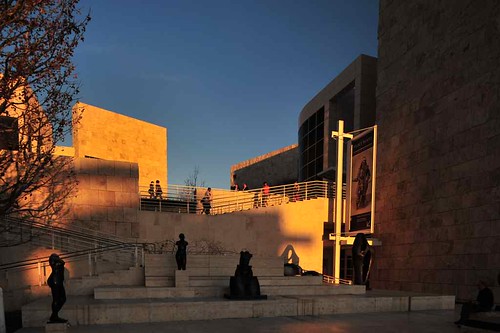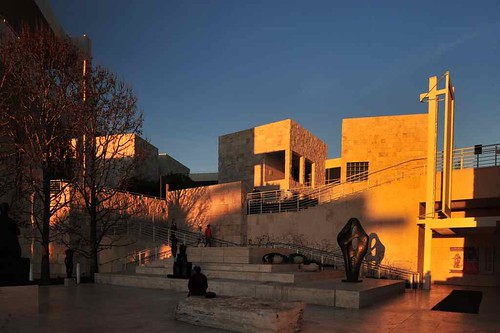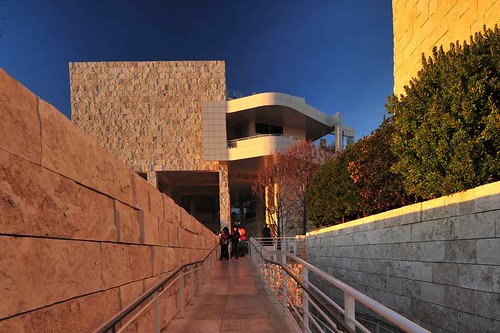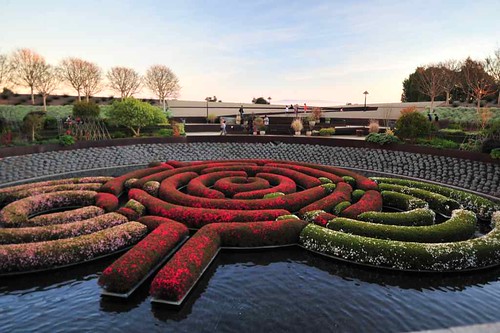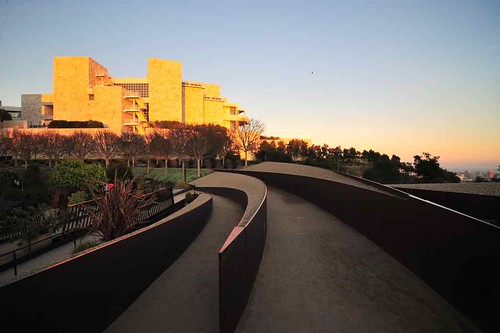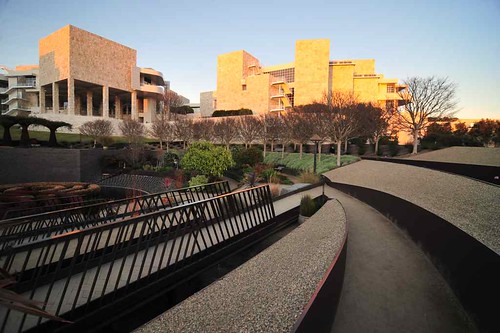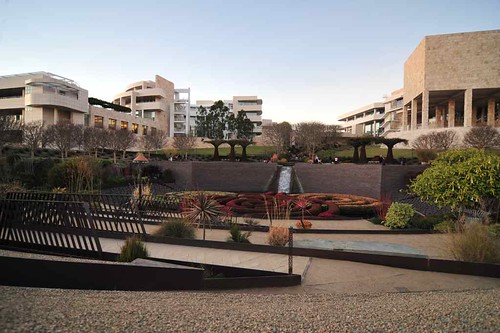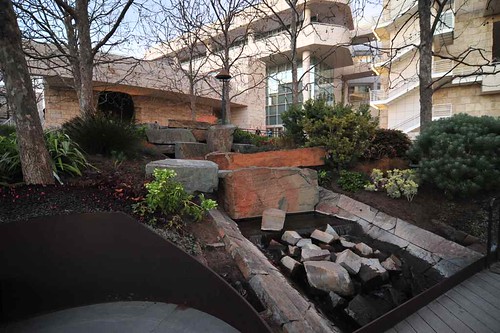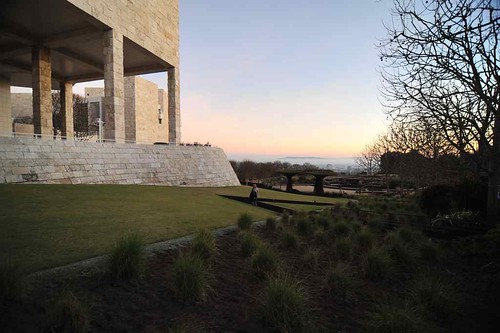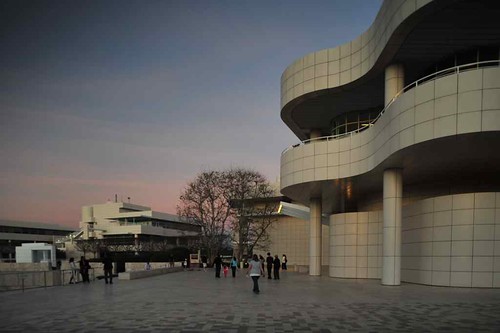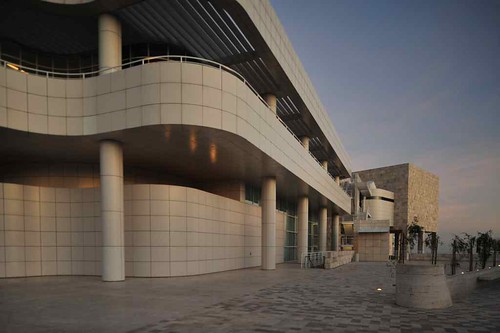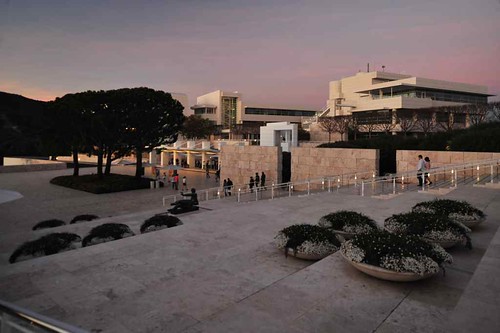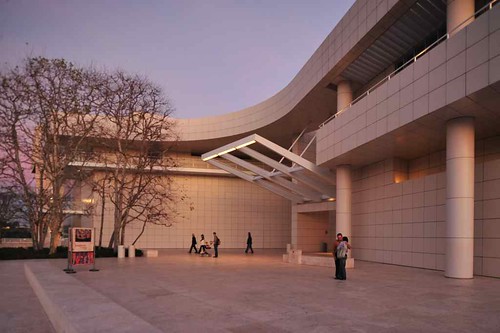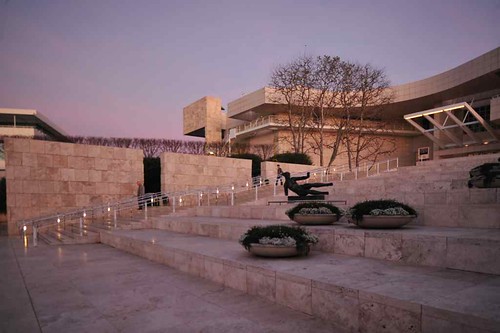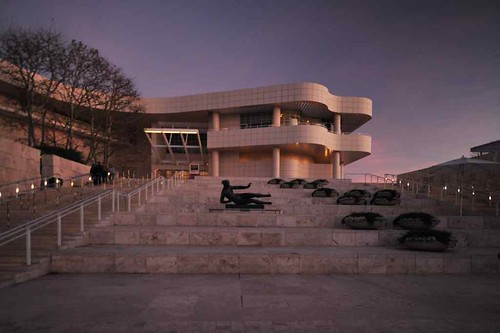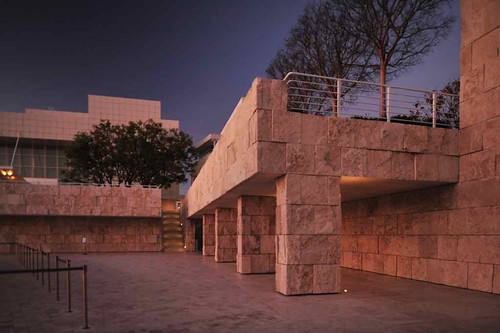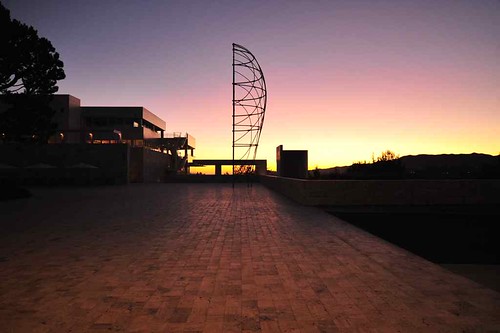跨世紀建築巨匠Richard Meier傑作:蓋蒂中心Getty Center重塑洛杉磯藝術地平線
發表於 : 2007-01-29, 19:04
跨世紀建築巨匠Richard Meier傑作:蓋蒂中心The Getty Center重塑洛杉磯藝術地平線
美國「蓋蒂博物館 The Getty Museum」所屬的蓋蒂中心 The Getty Center 是加州甚至是全世界收藏最豐富的博物館之一,這個位於聖他莫尼卡 Santa Monica 山區 405 號高速公路旁的巨大建築群, 在建築師理查‧梅爾 (Richard Meier)的監督下,歷經數年的努力於1997年底落成開幕。館中收藏了代表500 年間世界著名的藝術家的畫作、雕塑、攝影作品和其他藝術品,從文藝復興時期的倫勃朗的人物肖像到印象派的凡高的《鳶尾花》, 處處都能遇到讓您眼前一亮的藝術作品。該館也有很廣泛的兒童教育計畫,例如演講系列、獎學金、出版處、音樂節目及號稱有內容54,000 頁的網站,參觀蓋蒂博物館的網站如同上了一堂橫跨音樂、攝影及藝術的課。
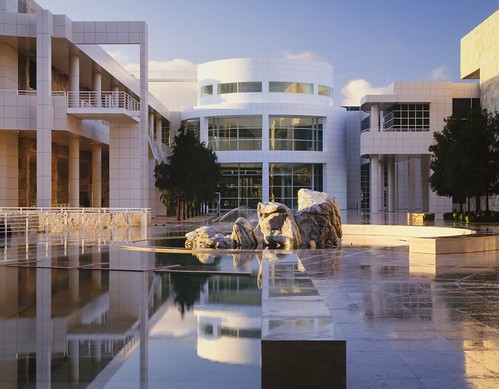
↗ Richard Meier - 蓋蒂中心 Getty Center
蓋蒂博物館的重要特色是它不僅提供了上乘的藝術藏品,而且通過獨特的建築、優美的花園和令人歎為觀止的景觀,為您提供了綜合的藝術享受。 蓋蒂博物館的整體風格一致,整組建築錯落有致,以白色作為基調, 線條簡潔,充分運用光影,在光影和風景的一動一靜中體現建築之美,整個博物館依山勢而建,和周邊環境渾然一體。
蓋蒂博物館的中心花園是洛山磯絕佳的觀景地點之一,在這裡向東望去,洛杉磯西部的景觀盡收眼底; 向西看,可以眺望優美的莫妮卡海灘和浩瀚的太平洋。由於蓋蒂博物館座落在山頂,遊客需要在山腳下的大門下車,乘坐博物館提供的纜車不到5分鐘就可到達山上,隨著纜車的上升,洛山磯全貌徐徐展現於您的眼前; 另一個景象就是您還能從各個角度目睹405公路雙向堵車的盛況,為洛杉磯之一絕。
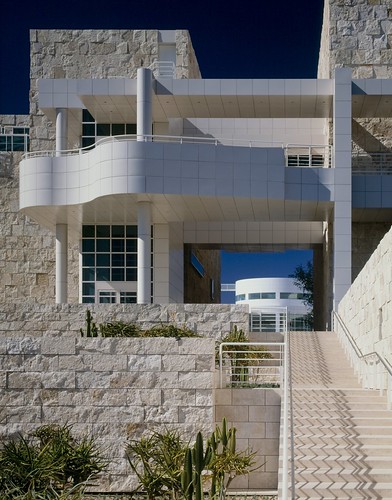

訪客從世界各地湧入這間藝術中心欣賞館中的典藏,中心內的風景、藝術品及庭院乃至室外的柚木桌、皮革沙發和進口的義大利大理石讓穿著休閒服的遊客享受高貴的藝術氣息。
蓋蒂博物館的資產來自其創辦人美國石油鉅子保羅.蓋蒂 Jean Paul Getty,1892-1976 於1976年去世時所遺留的資產。蓋蒂是世界上最富有的人之一,他繼承了他的父親的石油公司George F. Getty, Inc. 。 他於1930 年成為該公司的總裁及總經理,1956年該公司改名為蓋蒂石油公司 Getty Oil Company ,蓋蒂成為公司的主要所有者,從50 年代初期直到他的去世,蓋蒂一直在英國居住,他個人資產估計大約有三十億美元。
蓋蒂博物館和大量的藝術精品,都屬於蓋蒂基金會所有。蓋蒂基金會擁有7億美元的龐大資金。按照美國的稅法,基金會每年必須運用資金的4.25%在藝術相關事務上,才能享有減免稅賦的機會。 因此,對於擁有如此豐厚資產的蓋蒂基金會而言,如何花錢,真是煞費腦筋。
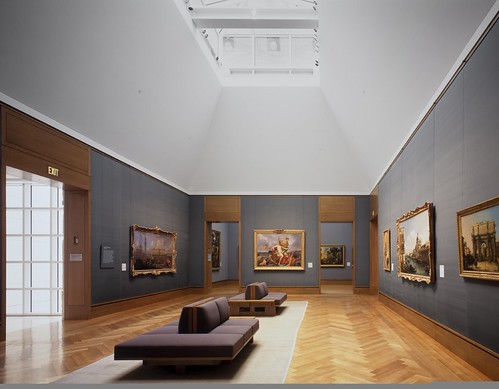
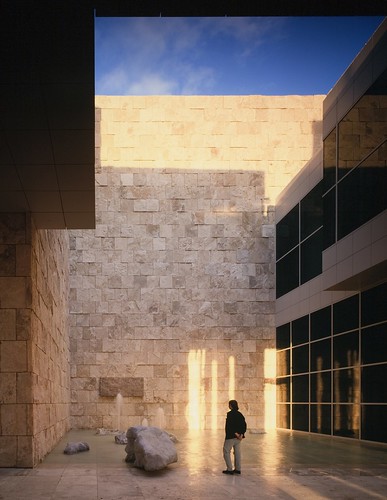
1982年,基金會新主席魏哈囉(Harold M. William)上任,他有意大展雄圖,成立藝術研究中心。 1983年,蓋蒂遺存的股票被德士谷(Texco)公司收購,基金會資產瞬間激增至17億美元, 這下子,堅定了基金會成立藝術研究中心構想的決心,當下就在西洛杉磯買下110英畝的山坡地,開始甄選藝術研究中心的設計建築師。首先,基金會聘請了加州柏克萊大學環境設計院長彭理查(Richard Bender), 加州聖塔克魯斯大學藝術史系主任班雷納(Reyner P. Banham),曾任國家藝術委員會委員的企業家戴頓(Kenneth Dayton),費城美術館長哈安妮(Anne D. Harnoncourt),前紐約時報建築評論家霍愛妲(Ada Louise Huxtable),哈佛大學義大利文藝復興研究中心主任史密思(Craig Smith), 與紐約古柏聯盟設計學院校長雷瑟(Bill Lacy)等學者專家,加上基金會中的兩位人士,組成了甄選委員會。這些一時之選的甄選委員們先挑選了33家建築師事務所,邀請他們送件以供審閱參考,然後初選出七家,再一一走訪參觀初選者的作品。 經過面談等程序,複選出三家,然後更進一步廣泛地與候選建築師們以前的業主交流,以期明了候選人真正的執業能力。
決選階段則由基金會的董事們從三位候選者之中擇一。決選名單的三位建築師是英國的史德靈(Jame Sterling),日本的楨文彥(Famihiko Maki)與美國的理查·麥爾(Richard Meier)。在親自體驗過三位建築師的作品之後, 委員們對史德靈與楨文彥皆有好感,尤其後者。可是委員們耽心以加州的營建技術,可能做不到他倆所要求的設計水準,更關鍵的是,這兩位外國建築師對常駐洛杉磯一事感到困難,不可能出席基金會頻繁的會議。
至於麥爾,雖然他於1972年因「五位建築師」一書嶄露頭角,但是多年來,他未曾設計過美術館,更缺乏從事大案的經驗。而委員會更對其一貫的建築風格產生疑慮。委員們認為蓋蒂中心的建築絕對不會是白色的, 絕不會使用金屬建材,而這兩點正是麥爾作品的獨特風格。如果麥爾負責設計,他願意放棄個人一貫的風格嗎?如果麥爾願意改變,新風格的不確定性遠超過甄選委員會所能掌控,是否造成對基金會的困擾? 麥爾在知悉委員們的考量之後,曾寫了一封四頁的長信以表明個人的態度,聲明他會尊重基金會董事們的決議,並不堅持白色的金屬建材,「景觀與建築應該有對話,應該從加州的地域與歷史來考量。」

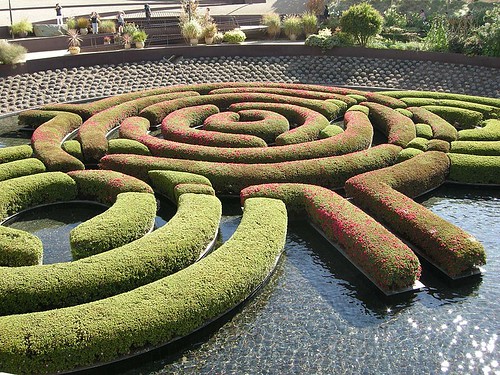
根據麥爾在《建造蓋蒂中心》一書中的自述,他之所以會獲選,在於他對基地的觀點與熱忱,贏得委員會的青睞。 1984年4月,在麥爾與甄選委員會初次面談之前,他提早抵達洛杉磯, 到基地及蓋蒂博物館觀察、參觀,並在洛杉磯體會大都市的種種,這些事前的準備功夫,令他充份掌握面談當天的氣氛、並侃侃敘述他本身在歐洲的經驗,及歐洲與美國建築的關係等等,讓他比其他兩位非美籍建築師更佔上風。 整個甄選過程花了一年的時間,1984年10月26日,美國建築師麥爾獲知喜訊,成為蓋蒂中心的設計者,當時他才剛過完50歲生日。基金會任命麥爾的同時,又新聘南加州建築師蓋裡(Frank Gehry)、 墨西哥建築師李格雷塔(Ricardo Legorreta)、藝術贊助家米勒(J. Irwin Miller)、圖案設計師貝少羅(Saul Basw),連同原是甄選委員的霍愛妲與雷熙,組成六人建築諮詢委員會,共同與麥爾研商整個中心詳盡的建築計劃。
洛杉磯新地標的誕生:Getty Center與城市文化地景的重塑
1990年10月9日,蓋蒂中心設計案正式公開,除了美術館,基金會各相關部門都有專屬共用的建築物,所以合計有七組主要建築群。從地下停車場搭電梯到電車站,大約5分鐘左右的車程,就可以目睹位在山丘上的「小城」(蓋蒂中心主體)。在美國,尤其是洛杉磯,停車場是興建工程第一個施工的建築物。停車總是優先被解決的事。此外,為免過於龐大的建築量體破壞景觀,蓋蒂中心地下達六層之多。蓋蒂中心予人的第一印象是直徑75英呎,挑高三層的門廳,在門廳可以看到被館舍包圍的庭園,庭園的觀念源自馬里布的蓋蒂博物館。由於新博物館規模巨大,麥爾有心藉著串連不同時代的展覽室之際,讓參觀者不時地接觸自然, 發揮基地本身的特色,讓參觀者有機會飽覽洛杉磯的天際線。
流連欣賞館內的展品之際,室內柔和的光線烘托出藝術品,這也是麥爾精心設計的成就。照明是美術館設計的重頭戲,麥爾以自然光為光源,為了避免紫外線對畫作等藝術品造成傷害,所以來自上方的光線是經過多次反射、漫射才進入室內。即使建築物的屋頂全是平的,其間的奧妙變化,從室內高度的不同與天花板的變化皆可窺悉。
光代表生命:Richard Meier在蓋蒂中心運用自然光營造出生命般的展覽室
「光即是生命」麥爾如是強調,他很巧妙的營造出有生命的展覽室,迴避了通常美術館以人工照明的光害問題。每間展覽室的壁面上僅見到掛著的藝術品,絲毫沒有干擾欣賞的建築設備,這點又反映出麥爾的細心與用心。室內空調的出風、迴風口,麥爾將之與腳板及掛畫板線融合,仔細觀看這兩處,可見到細長的隙縫,那就是必要的建築設備,可是若不經指出,想必沒有人會察覺。見微知著,蓋蒂中心設計與施工皆有相當的水準,當初的預算是6億美元,隨著設計修正,需求增加,預算節節高昇,到完工時,宣佈的花費高達10億美元。引發爭議最多的是色彩與建材問題,白色石灰石(Travertine)是這位美國建築師理查‧梅爾 (Richard Meier)最終選擇的外觀建材,這些石頭都是從義大利運來的。2000年前的羅馬鬥獸場用的也是同一個採石場的石頭。麥爾表示石材象徵永恆,刻意以粗糙的質感表現,是要讓建築物有如從地面自然地「生長」出來,這又是一次呼應環境的作為。麥爾本想在1996年10月12日完成蓋蒂中心,他想借這個重大的建設慶祝自己60歲生日,結果工程延宕1年。
「博物館有啟迪文明的功效,這項任務也可以透過建築物傳達。」麥爾很自豪地表示。如今人們到洛杉磯旅遊,在歡樂性的環球影城與迪士尼樂園之外,也可以看到相當具藝術性的蓋蒂中心。 被譽為洛杉磯最新藝術地標的蓋蒂中心,絕對值得用心、用眼去體會欣賞!
蓋蒂中心Getty Center建築圖

Richard Meier - Getty Museum/Getty Center Drawing 01 - overall site plan 基地平面圖

Richard Meier - Getty Museum/Getty Center Drawing 02 - entry level plan
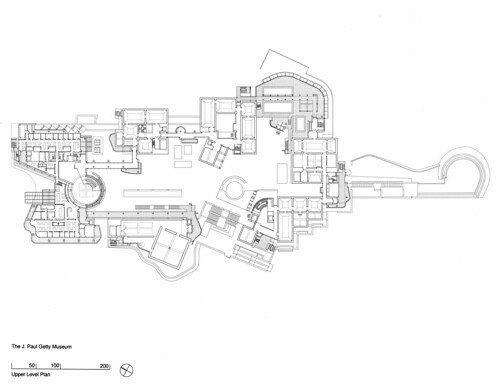
Richard Meier - Getty Museum/Getty Center Drawing 03 - upper level plan

Richard Meier - Getty Museum/Getty Center Drawing 04 - gallery section
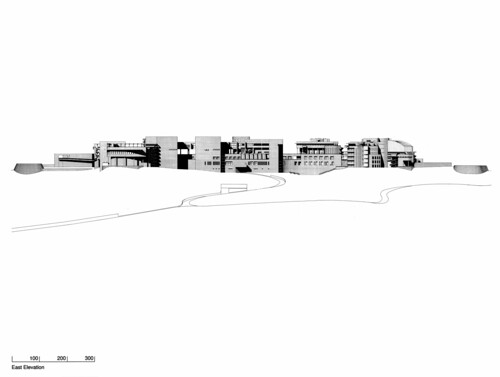
Richard Meier - Getty Museum/Getty Center Drawing 05 - east elevation

Richard Meier - Getty Museum/Getty Center Drawing 06 - north elevation
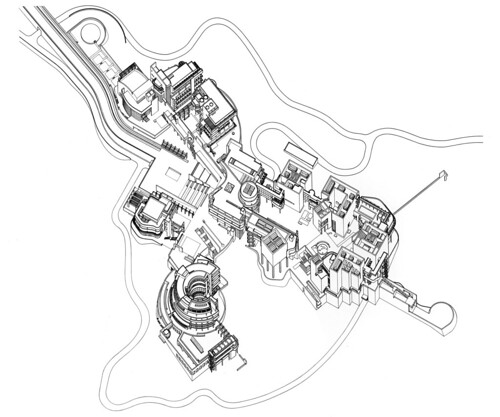
Richard Meier - Getty Museum/Getty Center Drawing 07 - axonometric
